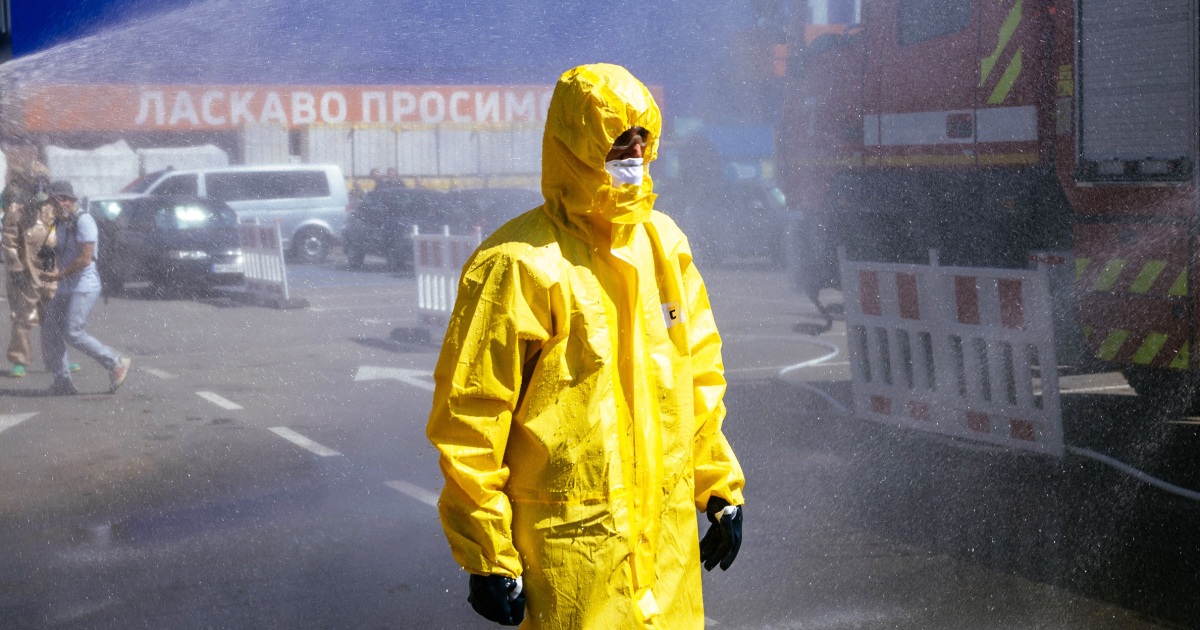The situation in the area near Europe’s largest nuclear power plant is «becoming increasingly unpredictable and potentially dangerous,» the head of the UN nuclear watchdog said on Saturday.
The director general of the International Atomic Energy Agency, Rafael Mariano Grossi, said in a statement that he was «extremely concerned about the very real nuclear safety and security risk» facing the Zaporizhzhia power plant in southeastern Ukraine.
«We must act now to prevent the threat of a severe nuclear accident and its associated consequences for the population and the environment,» he said.
He added that the Russian-occupied facility, which is nearly twice the size of Chernobyl, «must be protected.»
“I am extremely concerned about the very real nuclear safety and security risks facing the plant. We must act now to prevent the threat of a severe nuclear accident and its associated consequences for the population and the environment,” he said.
The statement said the IAEA had received information that residents of the nearby town of Enerhodar, where most of the plant’s staff live, had started and the organization was «closely monitoring the situation for any potential security impacts.» nuclear».
«IAEA experts on site continue to hear shelling on a regular basis,» the statement added.
Dmytro Orlov, the exiled mayor of Enerhodar, said in a Telegram post on Saturday that Russian forces were fueling an atmosphere of «panic» with recent announcements of evacuations.
“The first wave of evacuations started yesterday morning, but now you can’t call it ‘mass’. Some of the people who wanted to leave were put on buses. Some left in their own vehicles. Consequently, gas stations ran out of fuel yesterday. ATMs do not work, or work with great restrictions, and there is nowhere to get money, ”he said.
The General Staff of the Ukrainian Armed Forces said in a statement on Facebook that residents were being evacuated to Berdiansk and Prymorsk, two nearby cities on the Azov coast that are also under Russian military occupation.
The statement added that “evacuations are subject to persons holding Russian passports. The first to be evacuated are those who accepted Russian citizenship in the first months of the occupation.»
NBC News has not been able to independently verify either claim.
Captured by Russia in the early days of the war, the Zaporizhzhia complex is still operated by Ukrainian technicians. The plant’s six reactors generate more power than any such facility in the United States.
There was growing international alarm after shelling hit the site in August. Both sides have blamed the other for the attacks in the vicinity of the plant.
Grossi last visited the Zaporizhzhia station in March as part of an effort to secure an agreement from both sides on safeguards to ensure the plant’s protection.
The number of staff at the plant has decreased in recent months, the IAEA statement said, though it quoted site director Yuri Chernichuck as saying operational staff working there will not be evacuated and is doing everything necessary to ensure safety. site security.
United States formerly accused Russia of not recognizing the “serious radiological risk” in the plant.
The 1986 disaster at the Chernobyl nuclear power plant near the northern Ukrainian city of Pripyat is considered the worst in history.
It required the evacuation of more than 100,000 people living within a radius of nearly 19 miles, and the resulting radiation was detected across Europe. Officially, fewer than 50 people died as a direct result of Chernobyl, a number that scientists and environmental groups strongly dispute.
Ukrainian lawmakers have previously speculated that up to 3 million people could die and 51 million more could be affected by radiation in a serious incident involving the Zaporizhzhia plant.

